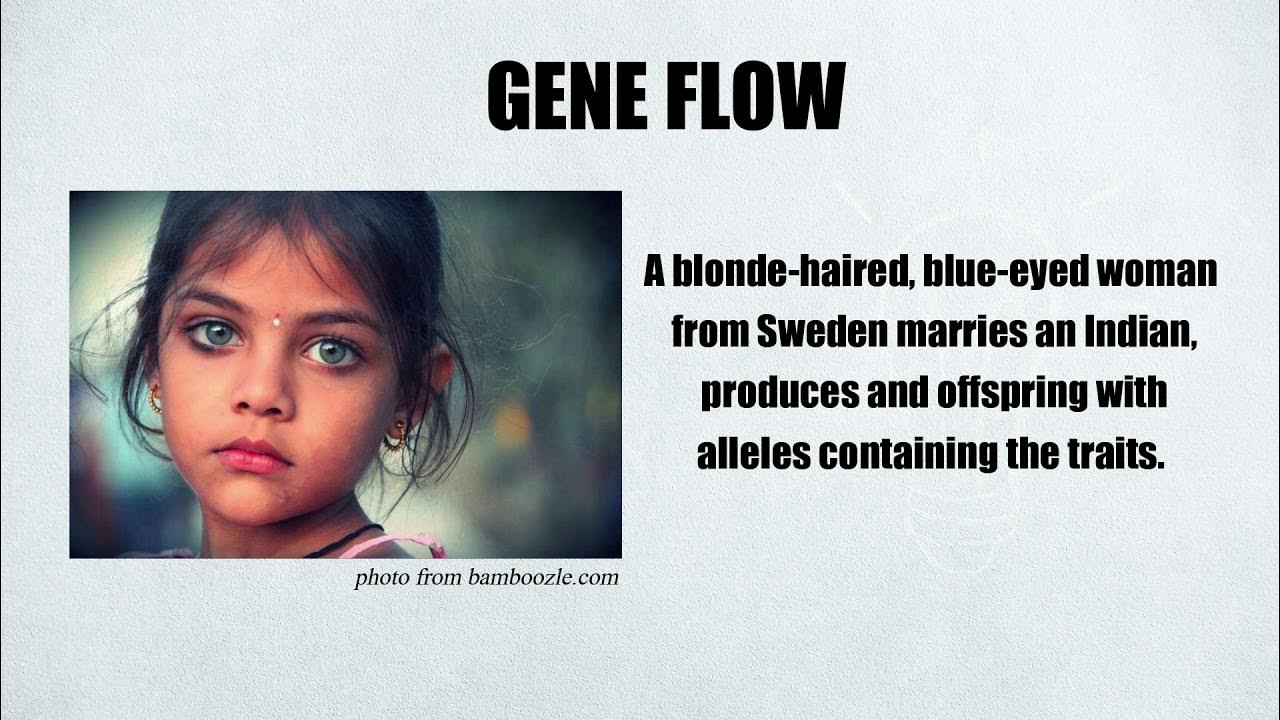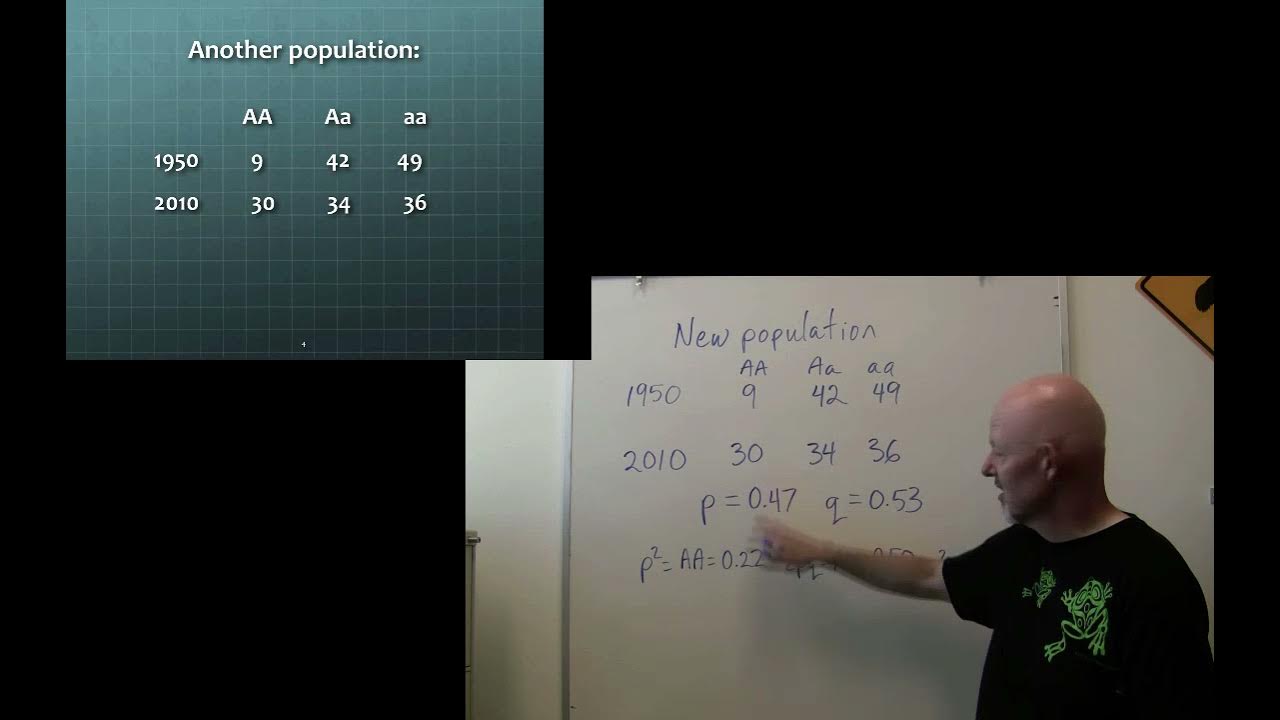Frekuensi gen dalam populasi ( Hukum Hardy Weinberg )
Summary
TLDRIn this video, Widyaningsih explains the concept of gene frequency in populations, focusing on Hardy-Weinberg's law. She covers the factors affecting gene frequency, such as mutation, natural selection, migration, and more. The video then walks through several examples to calculate gene frequencies in various scenarios, including dominant and recessive traits. Widyaningsih also demonstrates how to use the Hardy-Weinberg formula to compute these frequencies and discusses the necessary conditions for Hardy-Weinberg equilibrium, providing viewers with a clear understanding of genetics in populations.
Takeaways
- 😀 Gene frequency refers to the proportion of a specific allele in a population, and it can change due to mutation, natural selection, migration, recombination, domestication, and reproductive isolation.
- 😀 Hardy-Weinberg equilibrium states that allele frequencies in a population remain constant from generation to generation, given certain conditions are met.
- 😀 The five conditions for Hardy-Weinberg equilibrium are: no mutations, random mating, large population size, no migration, and no natural selection.
- 😀 The Hardy-Weinberg formula is: P + Q = 1 and P^2 + 2PQ + Q^2 = 1, where P is the dominant allele and Q is the recessive allele.
- 😀 P^2 represents the frequency of the homozygous dominant genotype, 2PQ represents the frequency of the heterozygous genotype, and Q^2 represents the frequency of the homozygous recessive genotype.
- 😀 In a population where 16% show a recessive trait, the frequency of the dominant allele (P) is 0.6, and the frequency of the dominant homozygous genotype is 0.36.
- 😀 When 1% of mice in a population have a recessive trait (e.g., short tails), the frequency of heterozygous individuals (carrying the dominant trait) is 18%.
- 😀 If 64% of individuals in a population can taste PTC and 36% cannot, the frequency of the PTC-tasting allele (P) is 0.4 and the frequency of the non-tasting allele (Q) is 0.6.
- 😀 For a population of 25,000 with 10 albino individuals, the carrier frequency for albinism is approximately 3.92%.
- 😀 Hardy-Weinberg's equilibrium model is a useful tool for predicting allele frequencies in ideal conditions and for understanding genetic variation in populations.
Q & A
What is gene frequency in a population?
-Gene frequency refers to the ratio or proportion of a particular gene or allele within a population. It is used to describe how common or rare certain alleles are in the gene pool of a population.
What factors can cause changes in gene frequencies within a population?
-Gene frequencies in a population can change due to factors such as mutations, natural selection, migration, recombination, domestication, and reproductive isolation.
What does the Hardy-Weinberg law state about gene frequencies in a population?
-The Hardy-Weinberg law states that the gene frequencies in a population will remain constant across generations, provided that certain conditions are met. These conditions include no mutations, random mating, large population size, no migration, and no natural selection.
What is the formula for Hardy-Weinberg equilibrium?
-The Hardy-Weinberg equilibrium formula is: P + Q = 1, where P represents the frequency of the dominant allele and Q represents the frequency of the recessive allele. The expanded form is P² + 2PQ + Q² = 1.
What are the conditions required for Hardy-Weinberg equilibrium to occur?
-For Hardy-Weinberg equilibrium to hold, the following conditions must be met: 1) No mutations, 2) Random mating, 3) A sufficiently large population size, 4) No migration (immigration or emigration), and 5) No natural selection.
In the given example, if 16% of individuals show a recessive trait (albino), how is the frequency of the dominant allele calculated?
-In the example, 16% of individuals show the recessive trait, meaning Q² = 0.16. To find Q (the frequency of the recessive allele), take the square root of 0.16, which equals 0.4. Then, using the equation P + Q = 1, calculate P = 1 - 0.4 = 0.6. The frequency of the dominant allele (P) is 0.6.
How do you calculate the frequency of heterozygous individuals in a population?
-The frequency of heterozygous individuals can be calculated using the term 2PQ from the Hardy-Weinberg equation. If P is the frequency of the dominant allele and Q is the frequency of the recessive allele, then 2PQ gives the proportion of heterozygotes.
In the example of the population of rats, how is the percentage of rats with long tails (heterozygous) determined?
-In the example, 1% of rats have short tails (recessive trait), so Q² = 0.01. Taking the square root of 0.01 gives Q = 0.1. Using P + Q = 1, P = 0.9. To find the percentage of heterozygous individuals, use the formula 2PQ, which equals 2 * 0.9 * 0.1 = 0.18, or 18% of the rats are heterozygous with long tails.
How is the frequency of PTC tasting ability determined in the example?
-In the PTC tasting example, 64% of individuals are tasters and 36% are non-tasters. Since non-tasting is recessive, Q² = 0.36, so Q = 0.6. Using the Hardy-Weinberg equation P + Q = 1, P = 1 - 0.6 = 0.4. The frequencies of PTC tasting (P) and non-tasting (Q) alleles are 0.4 and 0.6, respectively.
What is the frequency of carriers for the albino gene in a population with 10 albino individuals out of 25,000?
-To calculate the frequency of carriers for the albino gene, first find the frequency of the homozygous recessive genotype (a small a small). With 10 albino individuals out of 25,000, the frequency of the homozygous recessive genotype is 0.0004. Taking the square root of this value gives Q = 0.02. The frequency of carriers (heterozygotes) can be found using 2PQ, but in this case, we are only given the homozygous recessive frequency.
Outlines

This section is available to paid users only. Please upgrade to access this part.
Upgrade NowMindmap

This section is available to paid users only. Please upgrade to access this part.
Upgrade NowKeywords

This section is available to paid users only. Please upgrade to access this part.
Upgrade NowHighlights

This section is available to paid users only. Please upgrade to access this part.
Upgrade NowTranscripts

This section is available to paid users only. Please upgrade to access this part.
Upgrade Now5.0 / 5 (0 votes)





